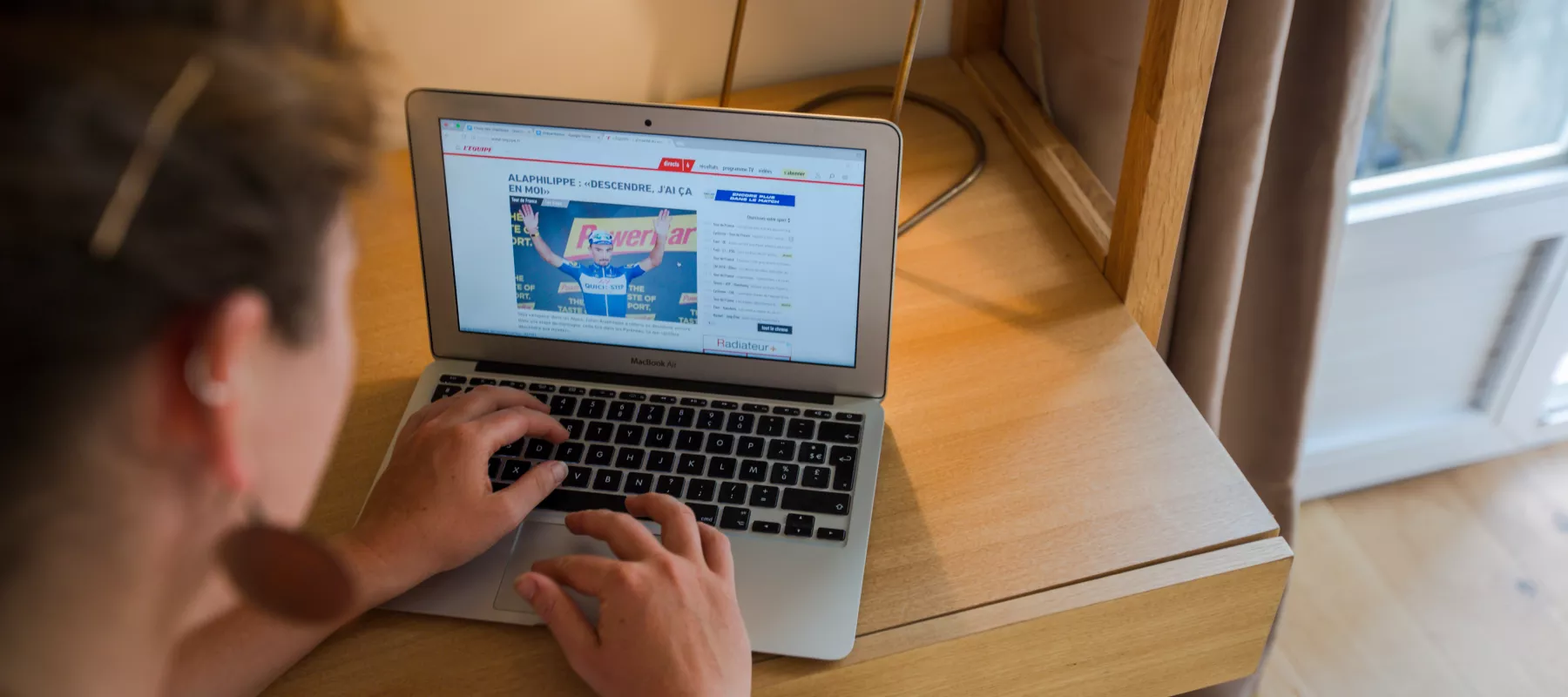Everything You Need to Know About Joint and Several Liability Guarantees

If you're looking for shared housing in Île-de-France, you've likely heard about joint and several liability guarantees... Let us explain this somewhat technical topic to you.
What is a joint and several liability guarantee?
Let's start with a definition of joint and several liability guarantee. According to the public service website and the law, it is explained: "A guarantor is a person who, in a written document called a deed of guarantee, commits to the landlord of the rented property to pay the tenant's rental debts. There are two forms of guarantees: simple guarantee and joint and several liability guarantee." If tomorrow the tenant (or roommate) is unable to pay their rent, the guarantor of the joint and several liability guarantee commits to paying the debts to the landlord. By signing a deed of guarantee, the landlord can thus rent out their property to tenants via a real estate lease and a deed of guarantee.
Note: In the context of a mobility lease, the landlord is not allowed to ask for a security deposit, but can request a guarantor. The mobility lease is a contract that lasts between 1 and 10 months maximum and cannot be renewed.
The difference between a joint and several liability guarantee and a simple guarantee
The difference between a joint and several liability guarantee and a simple guarantee lies in the procedure format in the event of unpaid rents by the tenant.
Simple Guarantee: In the event of unpaid rent, the landlord turns to their tenant. They must initiate a procedure to demand the payment of the unpaid rent from their tenant with the support of a bailiff. If this procedure fails, they turn to the guarantor to invoke the deed of guarantee. The guarantor must honor their commitment made at the time of signing the deed of guarantee to pay the amount of debts owed by the person they have guaranteed. The landlord must send them a registered letter with acknowledgment of receipt to inform them of the failure of the procedure prescribed by law regarding the tenant. They can also demand late penalties through this commitment. The maximum duration of the guarantee is defined by law depending on the type of lease signed.
Joint and Several Liability Guarantee: The landlord notices unpaid rents by the tenant. As indicated in the joint and several liability guarantee contract of the housing, in case of rental debts, they can directly turn to the guarantor of the joint and several liability guarantee. The joint and several liability guarantee deed directly engages the guarantor from the first unpaid rent. The landlord does not need to solicit the tenant to recover the owed amounts. As in the case of a simple guarantee, they can demand late penalties from the guarantor up to the maximum amount validated by signature in the document of joint obligation. A shared housing lease is generally accompanied by a joint and several liability guarantee contract, where the roommates are jointly responsible for the payment of rent. In the event of the roommates' inability to pay, the landlord then turns to their respective guarantors.

The Formalities of Joint and Several Liability Guarantees
Who can be a guarantor?
A - An individual: anyone can act as a joint and several liability guarantor for a tenant. Parents, friends, and family can all be guarantors. To do so, they must provide the landlord with a number of official documents to prove their ability to act as guarantors. The landlord then chooses among the tenants and their potential guarantors based on their own criteria.
B - A legal entity: a legal entity is a group with legal personality (e.g., a company, an association). Many legal entities offer guarantor services for tenants today. In the case of housing rented by a legal entity (a company), as is the case at La Casa, the landlord is not allowed to accept private guarantors. They must use a legal entity as a guarantor for their tenants, which then takes the form of insurance. Some players in the market for joint and several liability guarantees for tenants and landlords include: Visale: the Visale guarantee is aimed at young working tenants between 18 and 30 years old with a maximum rent of 1500 euros.
Garantme: The Partner of La Casa
Garantme offers an unpaid rent guarantee insurance (a "GLI"). This is taken out by the tenant, for whom Garantme acts as a guarantor. If the tenant is unable to pay their rent, the landlord turns to Garantme to cover the debts.
Garantme caters to all types of tenants (employees, job seekers, temporary workers, students, etc.) and covers unpaid expenses up to 90,000€.

The Commitments of the Joint and Several Liability Guarantor
An individual can act as a guarantor for another in various situations:
Joint and Several Liability Guarantor for Furnished or Unfurnished Shared Housing: This is a joint and several liability guarantee where roommates commit to paying each other's debts in case one tenant fails to pay.
Joint and Several Liability Guarantor for Furnished or Unfurnished Rentals: This follows the same principle as for shared housing, except since there are no roommates, a guarantor who does not live in the housing commits to paying any unpaid rent on behalf of the tenant.
Joint and Several Liability Guarantor for Commercial Lease: Similarly, the tenant of the commercial lease provides the support of a guarantor, who can pay the commercial lease's rent on their behalf if needed. Once there is a lease, there is a joint and several liability guarantee for the housing.
Joint and Several Liability Guarantor for Mortgage Loans: The concept of a joint and several liability guarantee is not limited to real estate leases. In the context of a bank loan to purchase real estate, the bank may ask the borrower for repayment guarantees. An individual then acts as a guarantor to facilitate the loan agreement.
Which model of joint and several liability guarantee?
Various models of joint and several liability guarantee contracts can be found online, but here are the terms most often mentioned in these contracts:
→ Tenant's identity documents
→ Guarantor's identity documents for the joint and several liability guarantee
→ Guarantor's certificate
→ Terms of the joint and several liability guarantee contract
→ The date the lease contract was signed
→ The duration of the shared housing contract (may be indefinite if it is tacitly renewed each year)
→ Rent amount
→ Rent payment date
→ Tenant's status (continuous education student, initial training student, etc.)
The joint and several liability guarantors can include a handwritten letter in the application. In this handwritten letter, the guarantors attest to having understood the effects of the guarantee, and acknowledge their state and responsibility in case of the roommate's default. This joint and several liability guarantee contract for housing is a commitment among its signatories, each being a guarantor of the joint guarantee. The guarantors remain as such for an indefinite duration, until the lease is terminated (a change in their income does not imply termination of the contract). Visit the public service website to find a model of joint and several liability guarantee.

At La Casa, how does it work?
At La Casa, the shared housing lease includes a joint and several liability guarantee. Thus, all roommates are bound by their lease to pay any rents that might become unpaid. However, they are protected from this risk by La Casa's unpaid rent guarantee insurance. As a landlord, La Casa is required to subscribe to an unpaid rent guarantee insurance. This defines a set of criteria that must be analyzed for each roommate. After applying, each candidate has a video interview with a staff member. This motivational interview is also the time to validate the financial documentation. If the candidate's file meets the criteria of the Unpaid Rent Guarantee Insurance (GLI) (type of contract, income) set by the insurer, they can be covered by the GLI. If the candidate's file does not meet the criteria of La Casa's GLI, the future roommate is encouraged to consider Garantme, La Casa's insurance partner. Each roommate is either covered by La Casa's GLI or by Garantme. Thus, in the event of unpaid rent, La Casa would first turn to its GLI or Garantme, before asking roommates to reimburse the unpaid rent. Furthermore, in case of default, roommates would be free to give their notice of departure and ensure the termination of their lease.





